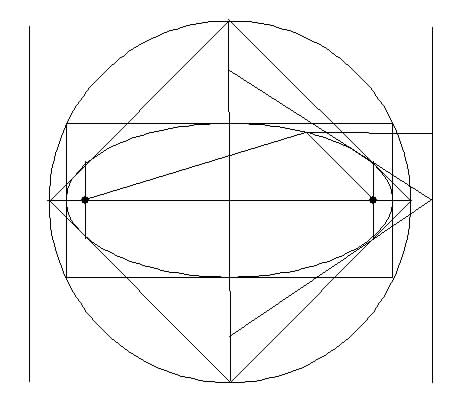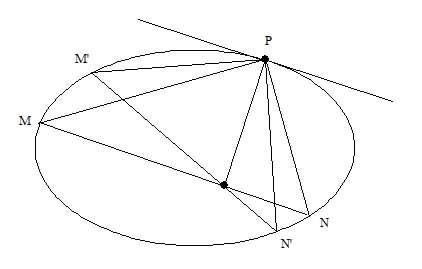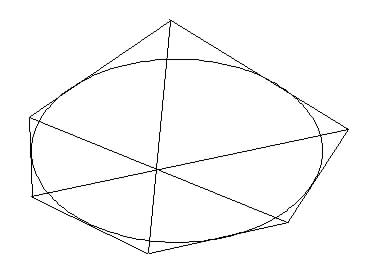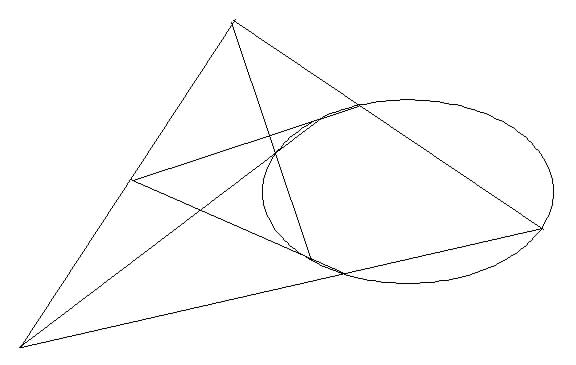Ellipses: Incircle and Circumcircle

Any curve formed by squashing or stretching a circle in such a way that all of its dimensions in one direction are decreased by a fixed ratio, p, or increased by a fixed ratio, 1/p, is called an ellipse (of proportion p). Every ellipse has a circumscribed circle and an inscribed circle of which it is a squashed or stretched version respectively. The diameters of these circles, joining their points of contact with the ellipse are called the major axis and minor axis of the ellipse (they are axes of symmetry). If the radii of the circles are a and b respectively than p = b/a, which can take any value between 0 and 1.
There is a rectangle that has the same circumscribed and symmetrically inscribed circles as the ellipse and the same axes of symmetry. Its longer sides are tangent at the ends of the minor axis. The ratio of the sides of this rectangle may be termed the shape, s, of the ellipse. Applying the theorem of Pythagoras to the quadrants of the rectangle, we find s = b/c where c is the half-length of the rectangle, and c = √(a² − b²), so s = b/√(a² − b²) = p/√(1 − p²). Thus s².p² = s² − p², and p = s/√(1 + s²).
An ellipse is the locus of points whose distances from two given points R and S add to a constant value, r + s = 2a. The foci R and S are the points where the fitted rectangle crosses the major axis. The ratio of the distance between the foci (2c) to the major axis (2a) is called the eccentricity of the ellipse, so e = c/a = √(a² − b²)/a = √(1 − p²). Thus e² + p² = 1 and p = √(1 − e²). An ellipse can be drawn by means of a loop of thread of length 2a held taut about a pencil at P and pins at R, S. The normal at P bisects the angle SPR.
If P is any point on the ellipse (other than the ends of the major axis, A, A') and P' its diametrically opposite point then the tangents at P and P' are parallel and meet the escribed circle at YZY'Z' forming a rectangle. The other sides YZ' and Y'Z pass through the foci of the ellipse. Conversely, given any point S inside a circle by drawing SY, to any point Y on the circle, and YZ perpendicular to SY, the lines YZ thus generated envelope an ellipse.




